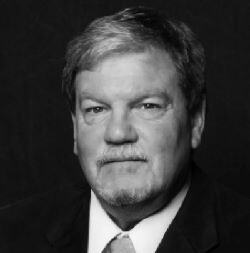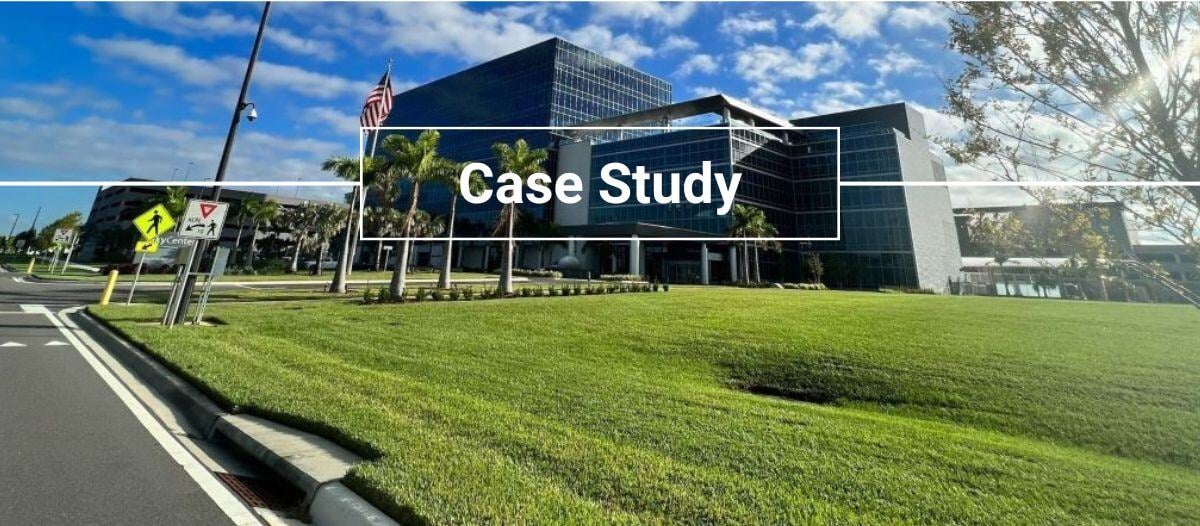The Ties that Bind
FM, HR & IT weave organizational experiences

A tapestry is a woven piece of art, a combination of threads that depict a scenario, an event or person. No tapestries are alike, each created with their own idiosyncrasies.
Used in reference to an intricate or complex combination of things or sequence of events, it is a form of textile art, traditionally woven by hand on a loom. Warp and weft are the two basic components used in weaving to turn thread or yarn into fabric. The lengthwise or longitudinal warp yarns are held stationary in tension on a frame or the loom while the transverse weft (sometimes woof) is drawn through and usually inserted over and under the warp.
Tapestry is weft-faced weaving, in which all the warp threads are hidden in the completed work, unlike most woven textiles, where both the warp and the weft threads may be visible. In tapestry weaving, weft yarns are typically discontinuous; the artisan interlaces each colored weft back and forth in its own small pattern area. It is a plain weft-faced weave having weft threads of different colors worked over portions of the warp to form the design.
A tapestry can describe anything that is multi-layered and complex, like a story or a location. It can depict life in the big city, international scenarios or even the workplace. The expression "warp and weft" can be used metaphorically the way fabric can be referenced. For instance, the warp and weft of an employee's experience can be equated to the fabric of their experience. Warp and weft are sometimes used even more generally in literature to describe the basic dichotomy of the world we live in, as in yin/yang or support/business. The expression is also used for the underlying structure upon which something is built.
An analogy using the warp and weft process could apply to a business organization. The weft would be the face of an organization, comprised of departments like accounting, marketing, sales, administration and so on. These are the employees who handle the business side of things. The warp provides the structure for the fabric and is what gives it its strength and form. It would be the underlying support groups that keep the tapestry together, unseen but integral to the overall success. These would include facility management, human resources (HR) and information technology (IT). Together, these departments provide the means to optimize quality of life balanced with quality of work for all employees. They all tie into a loom, the device used to weave cloth and tapestry. The basic purpose of any loom is to hold the warp threads under tension to facilitate the interweaving of the weft threads. The precise shape of the loom and its mechanics may vary, but the basic function is the same. The loom is the framework comprising the guidelines and structures that must be followed, such as company policy, compliance issues or laws and regulations.
Facility Management
FM focuses on the efficient and effective delivery of support services related to personnel and buildings. FMs have assumed many activities in the built environment. If a task does not directly tie into the business of the demand organization, FM is involved.
FM encompasses multiple responsibilities designed to ensure the efficiency, comfort, safety and functionality of the built environment through the integration of people, places and technology. This entails comprehensive collaboration with other support groups in a company.
Human Resources
HR finds the best way to increase the productivity of an organization through support of the employees. They provide benefits packages so that employees do not have to worry about extraneous factors such as family health and/or have investment opportunities available to them. HR normally handles payroll, allowing employees to pay their bills and save money for a rainy day. FM provides services so that workers can fulfill their job functions without distractions in the workplace. HR affords employees the ability to do their work without concern about external issues or challenges. HR also works with FM to publish policies and procedures that establish proper behavior and define standards to ensure all employees are treated respectfully and equitably.
Most facility leaders understand how the basic daily activities of HR can benefit from FM and conversely, how HR supplements and augments their efforts. The attraction of new employees and the retention of quality personnel is a focus of HR where FM can play a major role. With the influx of the younger generations into the workplace, sustainability and an organization's efforts regarding environmental, social and governance (ESG) play an important part in attracting and retaining employees. Whereas HR works on employee development to improve personnel, team and overall effectiveness, these employees want a safe and environmentally responsive culture that aligns with their personal values. FM delivers that.
Retention of employees is especially critical. Replacing a mid-level employee can cost about 20 percent of their annual salary. Meanwhile, replacing high-level staff with larger salaries and specialized training can cost more than 200 percent of their salary. HR and FM can help minimize the migration of workers. Paying attention to employee needs and keeping them safe, secure and satisfied saves money by mitigating the potential costs of hiring replacement employees and maintains a high level of consistency and productivity in the workplace.
Along with the attraction and retention of employees, the provision of benefits and compliance with regulations, diversity, equity and inclusion (DEI) is becoming increasingly important in both the HR and FM worlds. New personnel from all scopes of backgrounds are entering the workplace and businesses are rapidly expanding globally.
Diversity at its core is the presence of differences in the workplace. This includes differentiators such as race, gender, ethnicity, age and religion. Some sub-diversities may include things like heritage, social class, or sexual orientation. FMs and HR professionals must consider cultural and behavioral preferences to accommodate all employees.
Equity is an approach that recognizes the unique disparities within a system and provides relevant support systems for vanquishing obstacles, creating an environment where everyone is treated with the same considerations.
Inclusion refers to individuals with different identities feeling and being valued, leveraged and welcomed in the workplace.
DEI has two sources: people's personal journey and their systems work. Personal journeys include biases that may be carried inherently that have previously not been brought to light. Systems work refers to a concentrated effort at the organizational level to dismantle inequitable behaviors. To make sure that systems are equitable, behaviors and the power structures that support them may need to be adjusted at the individual and system levels.
FMs must consider how to address and improve DEI in their departmental operations and in support of HR. FM touches every unit in the workplace. If FMs are sensitive to employees needs and predilection's and can embrace DEI, it could prove to be a conduit for change throughout the organization. Progress within the department would have a ripple effect across the institution. The need to diversify the workforce and support everyone affected would be another way HR and facilities combine to improve workplace conditions. Focusing on diversity would be a way to solve many of the workforce challenges.
When FM works closely with HR, it helps change the perceptions of both entities from maintenance and reaction and rules and policies to a partnership devoted to employee well-being.
FMs and HR must share perspectives on areas where they see future opportunities to collaborate in capacities that benefit employees. Discussions should focus on how to make strategic decisions together and work to strengthen the workplace experience for employees. Leaders in each department should share their strategic plans for the upcoming years, ensuring agendas are supportive, both with each other and with the demand organization.
This approach, when implemented properly, will provide benefits that elevate the work force. It will strengthen the impact of the workplace and build an integrated approach to employees' experience.
Information Technology
The third thread of the warp that supports the fabric of the workplace is IT which refers to anything related to computing technology, such as networking, hardware, software, the Internet, or the people that work with these technologies. IT utilizes servers and computers to form information and communications systems. The equipment creates, processes, stores, retrieves and exchanges data for use in the workplace.
The current information age has placed IT in all aspects of everyday lives. The computer programmers, network administrators, computer engineers and web developers of which the IT department is comprised provide the wherewithal and technical support that facilitates work and play.
A large part of FM is collaboration with the IT department. FMs understand how employees utilize the technical equipment at their workstations, but they do not administer technology. In contrast, IT covers managing that technology, but does not always have the resources to determine need. FM and IT’s interaction is a vital component in the workplace to optimize productivity. Through digitization, workstation accessibly and capability, FM enables a productive, supportive workplace while IT keeps it all connected.
FMs also deal directly with IT to serve their own ends and is rife with the need and use of technology. From building automation systems, energy management systems, building information models, integrated workplace management systems, and computer automated facility management, to the more complex and exotic programs like the Internet of Things (IoT) and artificial intelligence, FM is more reliant on the IT department. It is self-serving for both groups to work well together, optimizing the cooperation between digital assets and facilities.
The intertwining of HR, IT and FM truly resides in communication and accommodation. With the employee demand for hybrid work schedules becoming more prevalent, space management, hoteling and telecommuting are playing a larger role in how these support groups serve the workforce. This development in the workplace scenario will necessitate the further melding of FM, HR and IT to perpetuate the success of the organization, no matter the venue.
Picture this: an employee sits down to work. The furniture was supplied by FM, ergonomically reviewed by HR, and networked by IT. Without any of the three, work could cease to happen.
FM has always been viewed as part science, part art. Together with willing partners in HR and IT, they are part of the whole that comprises the fabric of the workplace. The tapestry may be a shifting tableau, the weft ever-changing to depict new innovations or directions of an organization, but the warp -- the supporting structure of the piece -- will remain constant, committed to ensuring that all the resources necessary to get work done are available. FM, HR and IT may reside in the background, hidden from sight. However, they are an essential part of any organizational success, tied together by the common thread of dedication to the well-being of their customer base. The delivery of safety, comfort, overall feelings of security and connectivity to the world beyond their desk is in place to allow employees peace of mind. Contemplating fine art fulfills that need admirably.

Bill Conley, CFM, SFP, FMP, LEED AP, IFMA Fellow, is a facility manager at Yamaha Motor Corp. in Cypress, California, USA. He previously served as owner and chief sustainability officer of CFM2, a facility management company. Conley has more than 40 years of experience in the facility management profession and has been a proponent of sustainable operations for more than 20 years. Conley has served on the IFMA board of directors, is a recipient of IFMA’s Distinguished Member of the Year award and has received the association’s Distinguished Author award three times. He has been a regular contributor to FMJ for almost 30 years and has authored more than 100 FMJ articles.
Read more on Communication , Networking and Workplace
Explore All FMJ Topics









